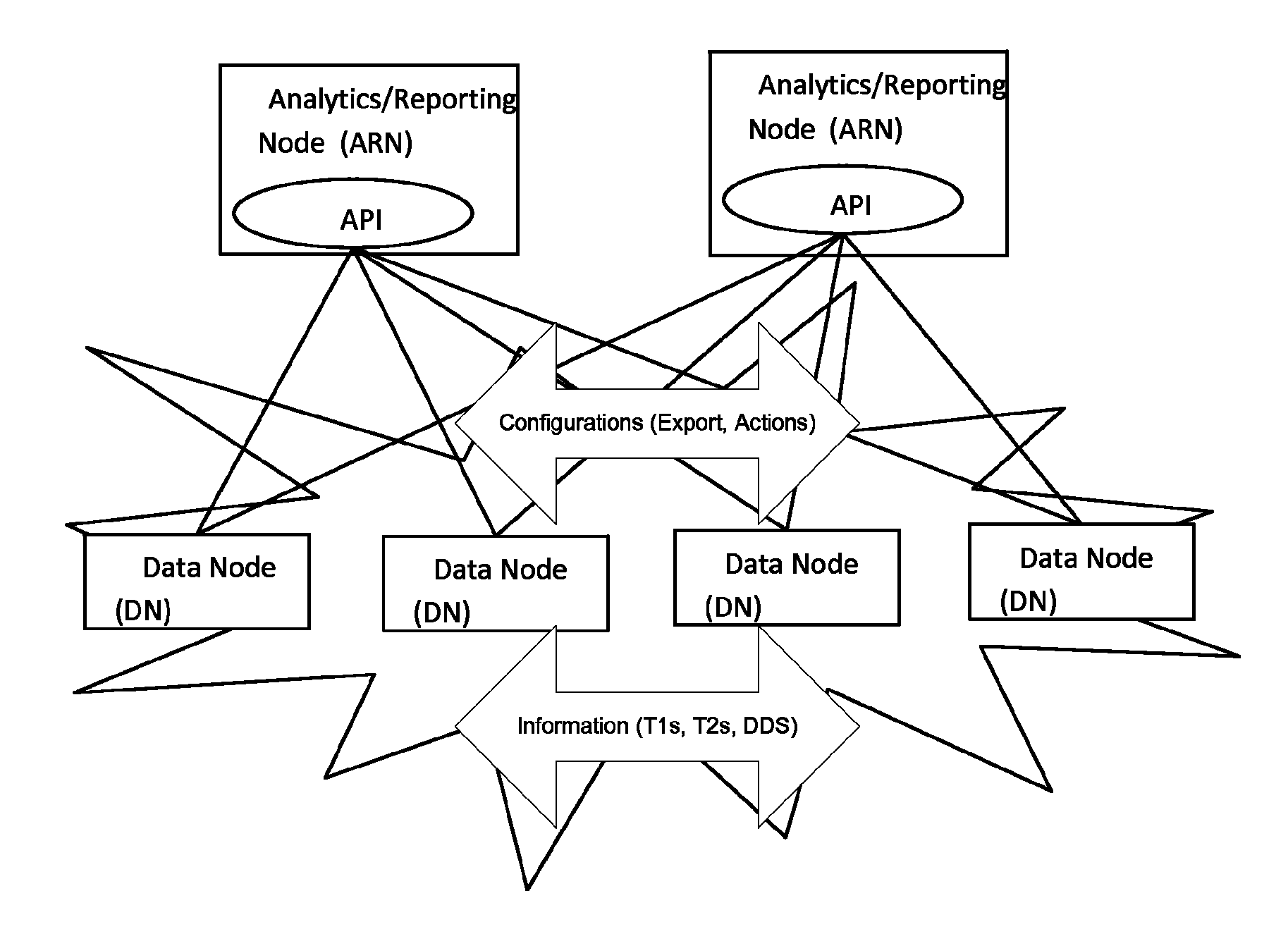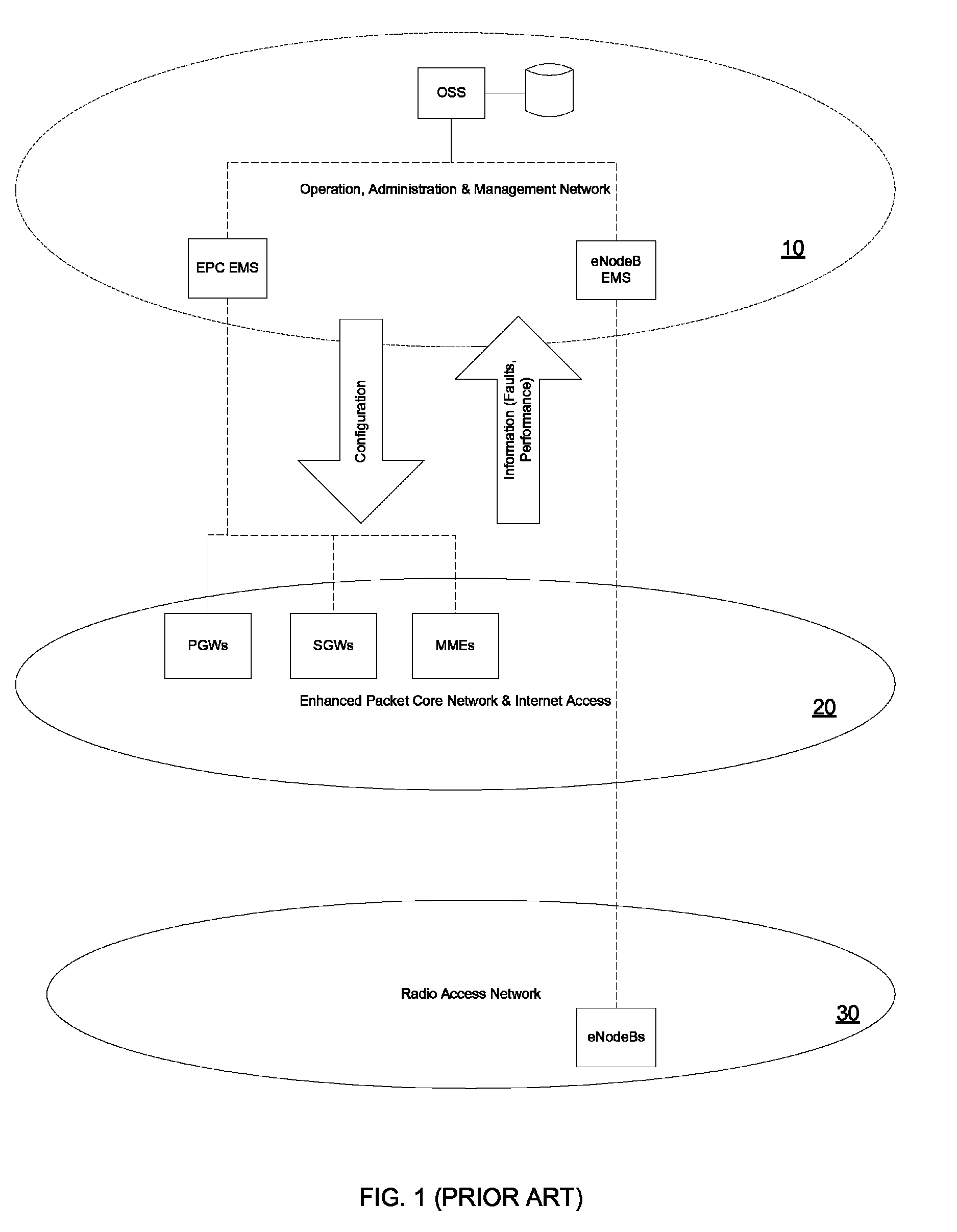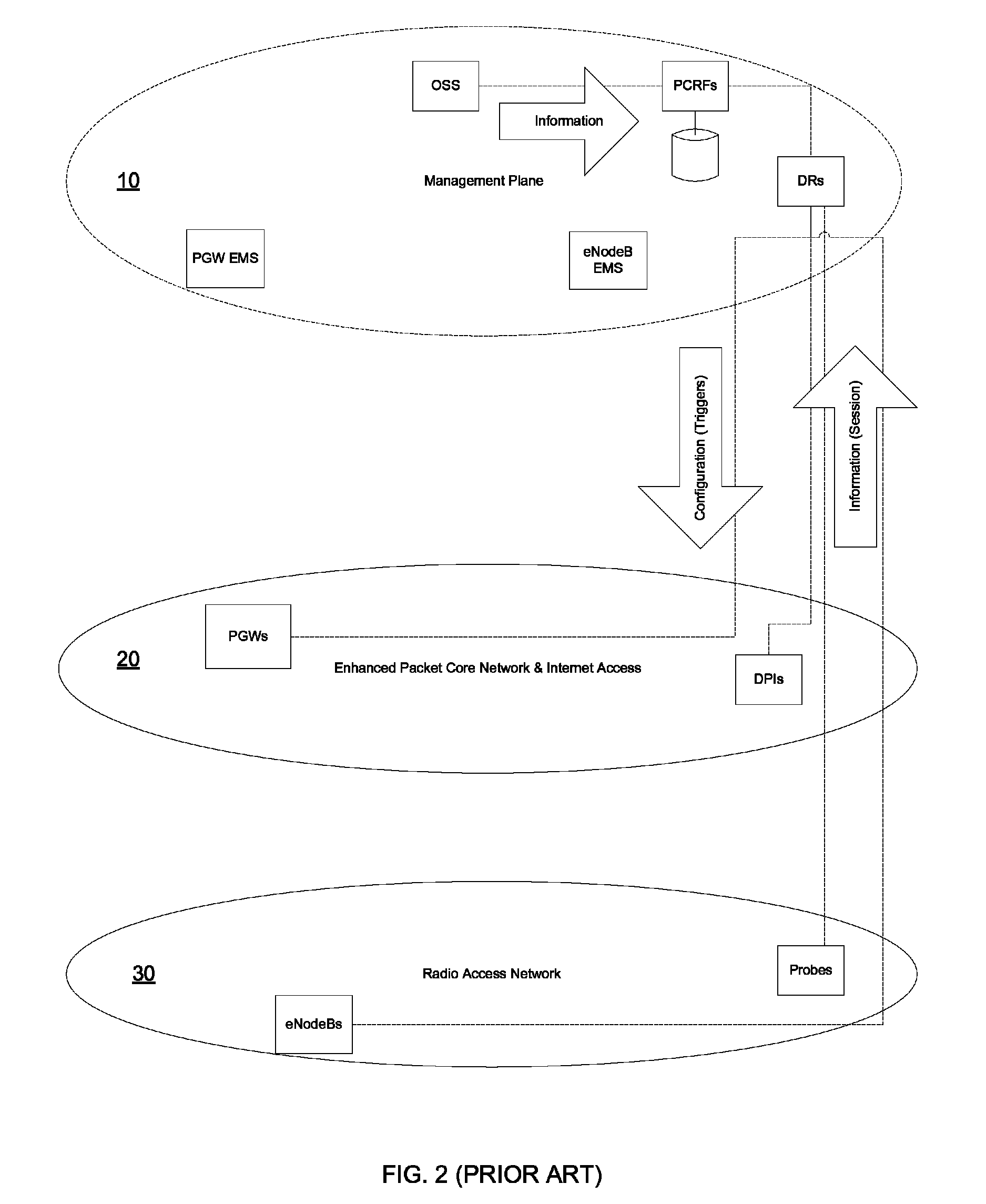Distributed RAN information collection, consolidation and RAN-analytics
a technology of distributed rans and information collection, applied in the field of distributed ran information collection, consolidation and rananalytics, can solve the problems of inability to inspect large amounts of fine-grained data, takes weeks and months to make use, etc., and achieves the effects of increasing the rate of signaling messages, high degree of accuracy, and fostering online training
- Summary
- Abstract
- Description
- Claims
- Application Information
AI Technical Summary
Benefits of technology
Problems solved by technology
Method used
Image
Examples
Embodiment Construction
[0026]FIG. 4 illustrates the current invention exemplifying the process to manage, consolidate and produce descriptive and predictive analytics in a Radio Access Network (RAN) to be used for export or action. U.S. Pat. No. 8,111,630 and U.S. Patent Publication 2013-0021933 define methods and procedure for Content Caching in the Radio Access Network (RAN) in which a network device placed in RAN intercepts Control plane and User Plane protocols, correlates between per user control plane and user plane protocols to extract per user signaling flows, and user plane dataflows. The current invention identifies methods and procedures to retain such information at the point of collection, and presents consolidated and summarized information in an abstract way, so as to minimize the amount of information transferred to plurality of central nodes that collect such information from a number of such devices. Such consolidation and summarization is dynamic and on demand, in the sense that rules f...
PUM
 Login to View More
Login to View More Abstract
Description
Claims
Application Information
 Login to View More
Login to View More - R&D
- Intellectual Property
- Life Sciences
- Materials
- Tech Scout
- Unparalleled Data Quality
- Higher Quality Content
- 60% Fewer Hallucinations
Browse by: Latest US Patents, China's latest patents, Technical Efficacy Thesaurus, Application Domain, Technology Topic, Popular Technical Reports.
© 2025 PatSnap. All rights reserved.Legal|Privacy policy|Modern Slavery Act Transparency Statement|Sitemap|About US| Contact US: help@patsnap.com



